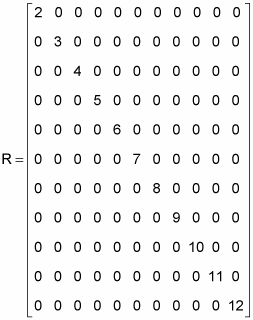In quantum physics, the eigenvectors of a Hermitian operator define a complete set of orthonormal vectors — that is, a complete basis for the state space. When viewed in this “eigenbasis,” which is built of the eigenvectors (note that eigen is German for “innate” or “natural”), the operator in matrix format is diagonal and the elements along the diagonal of the matrix are the eigenvalues.
This arrangement is one of the main reasons working with eigenvectors is so useful; your original operator may have looked something like this (Note: Bear in mind that the elements in an operator can also be functions, not just numbers):

By switching to the basis of eigenvectors for the operator, you diagonalize the matrix into something that is much easier to work with:

You can see why the term eigen is applied to eigenvectors — they form a natural basis for the operator.
If two or more of the eigenvalues are the same, that eigenvalue is said to be degenerate. So for example, if three eigenvalues are equal to 6, then the eigenvalue 6 is threefold degenerate.
Here’s another cool thing: If two Hermitian operators, A and B, commute, and if A doesn’t have any degenerate eigenvalues, then each eigenvector of A is also an eigenvector of B.






